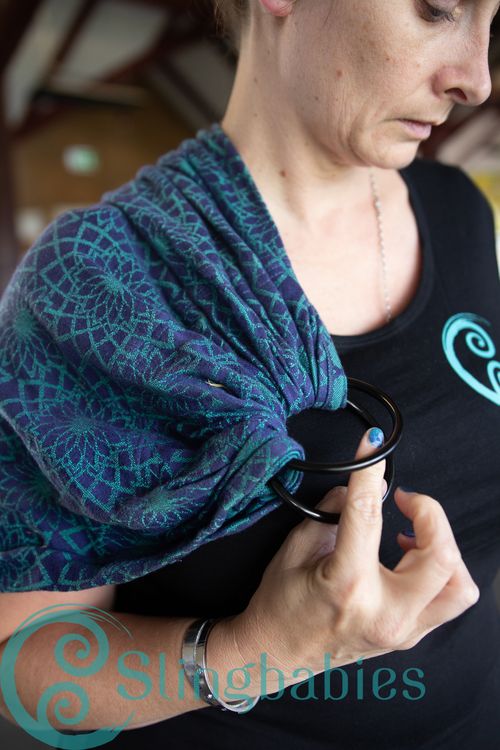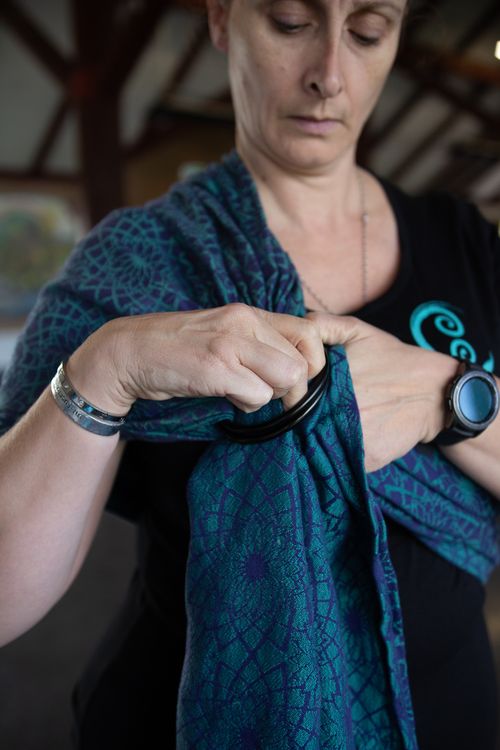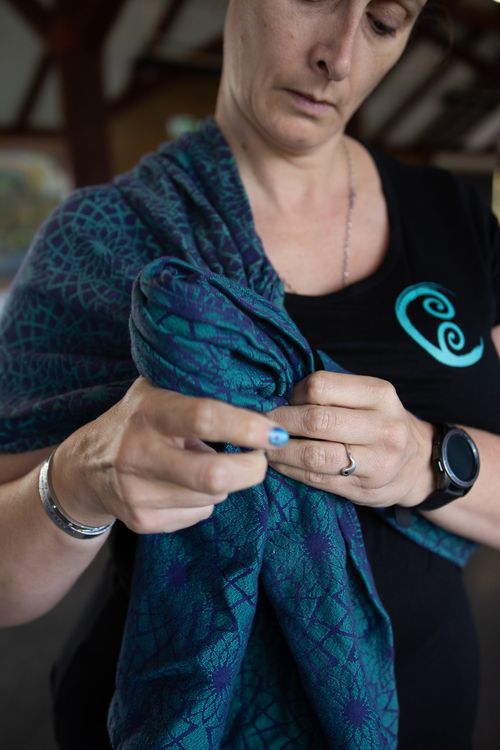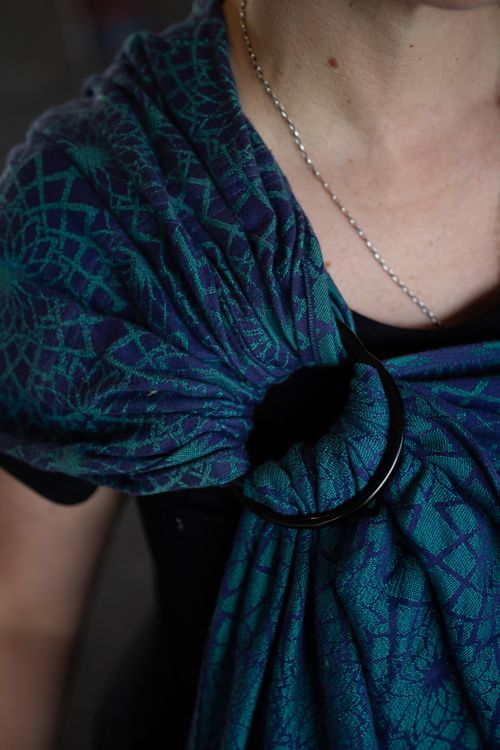A ring sling is a fantastic option for babywearing, offering a quick and adjustable way to keep your baby close while freeing up your hands. Whether you’re using it for a newborn snuggle or a hip carry for an older baby, this guide will help you use your ring sling safely and comfortably.
What is a Ring Sling?
A ring sling is a long piece of fabric with two rings sewn into one end. It is worn over one shoulder, with the fabric threaded through the rings to create a secure and adjustable pouch for your baby. Ring slings are lightweight, easy to store, and ideal for quick ups and downs.
Benefits of a Ring Sling:
✅ Suitable for newborns through toddlers (check weight limits from the manufacturer).
✅ Quick to put on and adjust.
✅ Allows for multiple carrying positions (front, hip, and some back carries for experienced wearers).
✅ Provides a snug, natural position for babies, supporting their development.
How to Use a Ring Sling – Step by Step
1. Threading the Sling
Before using your sling, make sure it is properly threaded:
- Hold the rings at your shoulder, letting the fabric hang down in front of you.
- Take the loose end (tail) and thread it through both rings from underneath.
- Separate the rings and pull the fabric back through just one ring, creating a secure loop.
- Spread the fabric evenly in the rings to prevent twisting.
Pro Tip: A well-threaded sling should allow for easy adjustments while staying securely in place.
2. Putting on the Sling
- Place the sling over one shoulder, with the rings resting just below your collarbone.
- Spread the fabric wide across your back to distribute weight evenly.
3. Positioning Your Baby
Newborn (Front Carry, Tummy-to-Tummy Position)
- Hold your baby against your chest in the ‘M’ position (knees higher than their bottom).
- Gently lower your baby into the sling pouch, supporting their head and neck.
- Adjust the fabric so it supports their back, with their bottom sitting deep in the pouch.
- Tighten the sling by pulling the fabric tail through the rings in sections (top, middle, bottom) for an even fit.
Your baby should be: ✔ Close enough to kiss
✔ In view at all times
✔ Upright with chin off their chest.
Hip Carry (For Older Babies Who Can Sit Unassisted)
- Place baby on your hip, with one leg in front and one leg behind you.
- Guide their bottom into the pouch and ensure their legs form the ‘M’ position.
- Tighten the sling gradually for a secure fit.
Safety Tips for Using a Ring Sling
Follow T.I.C.K.S. (Tight, In View, Close Enough to Kiss, Keep Chin Off Chest, Supported Back).
Ensure airway is clear – never allow baby’s face to be covered by fabric.
Check baby’s position often, especially when they fall asleep.
Avoid carrying low on the body – baby should be at a high, kissable height.
Distribute weight evenly – spread the fabric wide across your back and shoulder.
Practice over a soft surface if you’re new to using a ring sling.
Common Issues & How to Fix Them
? Problem: Sling feels too tight or loose.
✅ Solution: Adjust the fabric through the rings in small sections for even tightening.
? Problem: Shoulder feels strained.
✅ Solution: Make sure the fabric is spread wide across your back and not bunched up on your shoulder.
? Problem: Baby seems slumped inside the sling.
✅ Solution: Perform a pelvic tuck by gently tilting baby’s pelvis forward, ensuring they sit deep in the sling.
When to Stop Using a Ring Sling
Most ring slings can support babies up to 15-18 kg, but you should stop using it when:
⚠ Baby becomes too heavy for you to carry comfortably on one shoulder.
⚠ The fabric shows signs of wear and tear (loose stitching, frayed edges).
⚠ Your child resists being in the sling or prefers other carrying methods.
A ring sling is a wonderful, versatile babywearing tool that allows you to keep your little one close while staying mobile. With proper use and adjustments, it can be a comfortable and safe option for both you and your baby. Happy babywearing!






